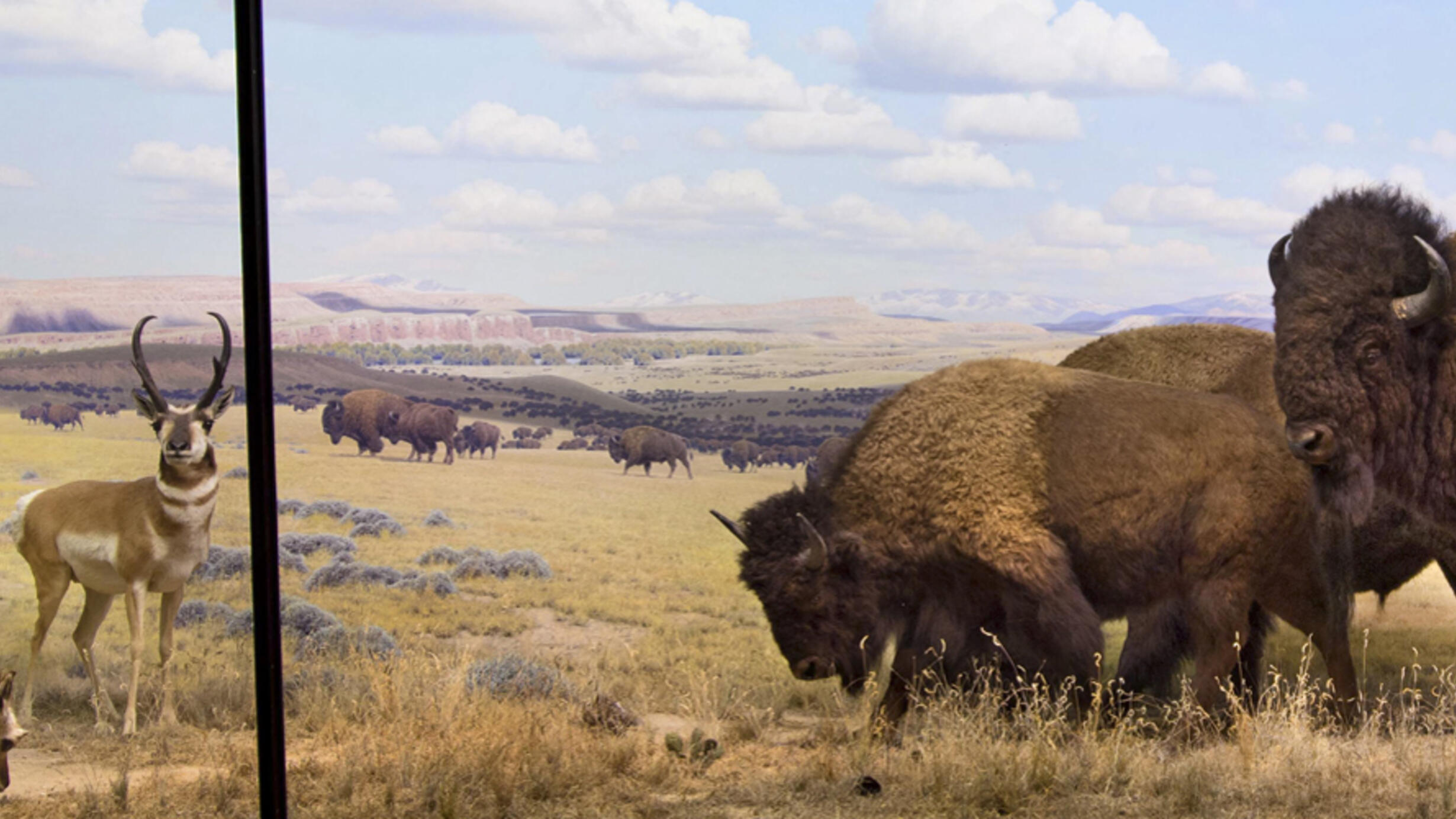American Bison and Pronghorn
Part of Hall of North American Mammals.

October Afternoon, Mid-1800s, Wyoming
This diorama is set in the mid-1800s, when the prairies teemed with tens of millions of bison. A few decades later fewer than a thousand remained. The species was nearly exterminated for hides and sport, and to subdue Native Americans who relied on bison for food and livelihood.
This “great slaughter” ignited the first effort to save a mammal from extinction. As bison dwindled, ranchers began to breed them, and some were transferred to sanctuaries. Today, this North American icon is numerous again—but nearly all bison are raised for meat on fenced ranches. Domestication and inbreeding means that truly wild bison are still quite rare.
Prairie of the Past
Near the North Platte River, Southern Wyoming
If you were a stagecoach passenger crossing the Great Plains in the 1860s, this would be the view from your window: bison and pronghorns as far as the horizon. Their numbers shaped the native ecosystem of this sea of grass. Bison clipped the grass, stimulating new, nutritious growth. Bison droppings nourished the soil. The shallow dishes of dirt that bison wallowed in stored precious rainwater. As bison and pronghorns thrived, so did prairie dogs, cowbirds, and other grassland creatures. Today, much of North America’s native prairie has been plowed for crops, seeded with introduced grasses or turned to pasture for cattle.
© AMNH Library
© AMNH Library
© AMNH Library